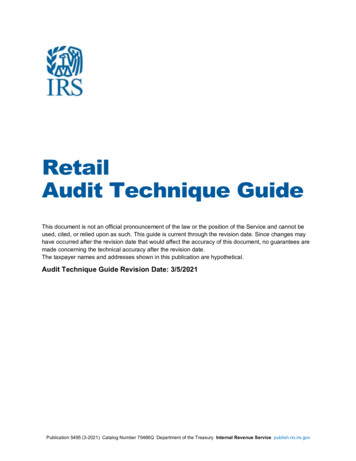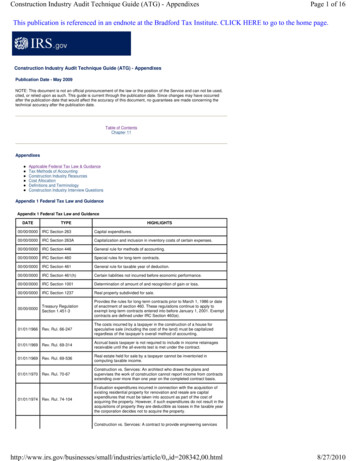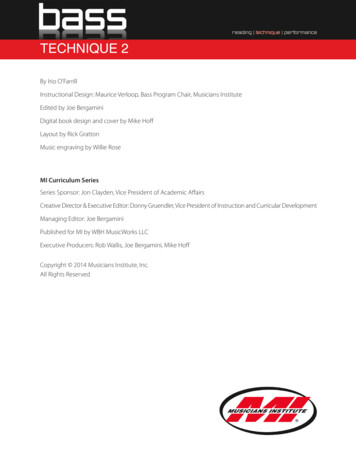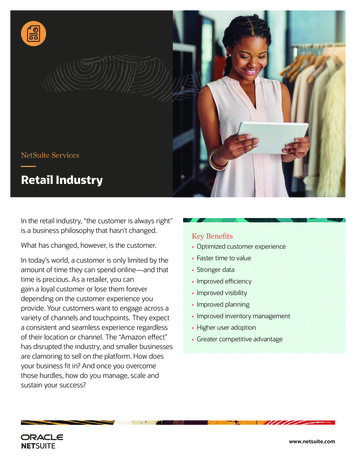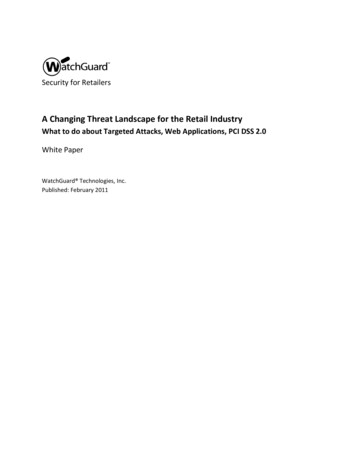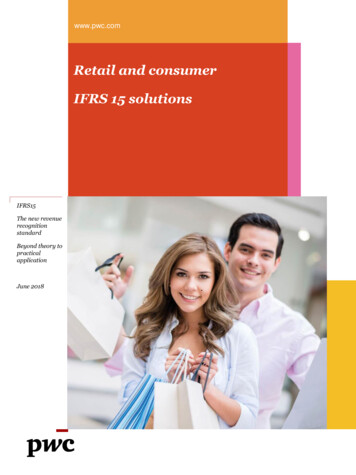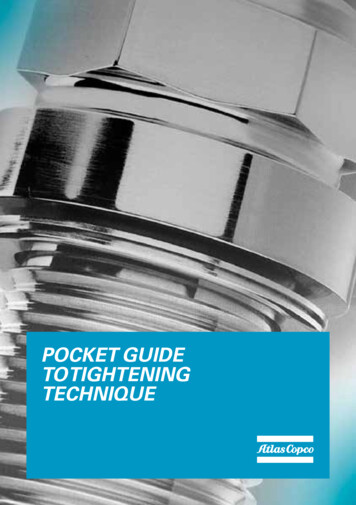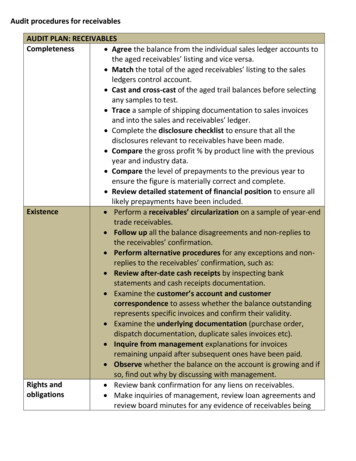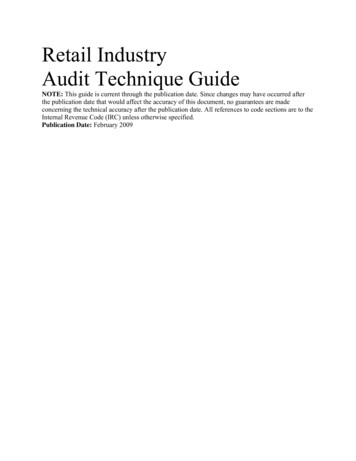
Transcription
Retail IndustryAudit Technique GuideNOTE: This guide is current through the publication date. Since changes may have occurred afterthe publication date that would affect the accuracy of this document, no guarantees are madeconcerning the technical accuracy after the publication date. All references to code sections are to theInternal Revenue Code (IRC) unless otherwise specified.Publication Date: February 2009
Table of ContentsChapter 1: Description of the Retail Industry . 5Purpose for the Audit Technique Guide . 5Description of the Retailer . 5What Retailers Do . 5Demographics of the Retail Industry . 5Retail Entities . 6Useful Retail Web Sites . 6Unique General Industry Terminology . 6Chapter 2: General Issues in Retail . 8Initial Interview . 8Information Document Request . 9Books and Records . 9Income Issues . 10Cash Records . 10Indirect Methods . 11Sources of Receipts . 16Other Retail Income Sources . 20Cost of Goods Sold . 21Retail Inventory: IRM 4.43.1 . 21Personal Consumption of Inventory . 22Retail Inventory Method (RIM): IRM 4.43.1.3.1 . 22Last In, First Out (LIFO): IRM 4.43.1.3.1.3 . 24Stock Ledger (INVENTORY): IRM 4.43.1.3.2.5.4 . 24Point of Sale Perpetual Inventory Control System . 24Valuation Of An Acquired Retailers Inventory (PDF) (Coordinated Issue) . 24Purchases . 24Expenses . 25Excise Tax Issues . 27Employment Tax Issues/Information Returns . 27Chapter 3: Examination Techniques for Specific Industries . 29Electronic Business, Online Retail . 29Introduction . 29Internet Investigative Tools . 29Audit Techniques & Interview Questions . 30Income . 33Cost of Goods Sold . 33Page 1 of 158
Expenses . 33Glossary . 35EXHIBIT 1: E-Business . 35Video/DVD Rental Business . 42Introduction . 42Income . 42Cost of Goods Sold . 42Expenses . 42Glossary . 43Statistics . 44Gasoline Service Stations . 45Introduction . 45Initial Interview Questions . 45Income . 46Expenses . 50Web Sites . 57Glossary . 57Statistics . 59Independent Automobile Dealerships . 60Introduction . 60Initial Interview . 63Books and Records. 66Income . 66Cost of Goods Sold and Purchases/Inventory . 72Purchases from Other Dealers . 73Expense Issues . 77Related Finance Companies . 77What is a Non-Prime or Sub-Prime Finance Contract? . 80Direct Sellers . 89Introduction . 89Income Issues . 91Partnership v. Sole Proprietorship . 96Employee v. Independent Contractor . 97Profit v. Not-For-Profit Issue . 98Nine Factors and Analyses . 99Examination Practices . 102Websites For More Information: . 103Code Sections, Revenue Rulings and Court Cases . 103Auto Body/Repair . 106Page 2 of 158
Introduction . 106Description of Auto Body Repair Process . 106Initial Interview . 108Tour of Business . 109Books and Records. 109Income . 111Categories of Charges . 113Other Income Sources . 114Indications of Underreporting . 115Other Income Issues . 116Cost of Sales . 117Expenses . 120Glossary . 121Chapter 4: Examination Techniques for the Food and Beverages Industries . 125Retail Liquor Stores . 125Introduction . 125Income . 125Cost of Goods Sold .
and the retail value of the items handled during an accounting period. The dollar value of the inventory at cost is divided by the dollar value of the inventory at retail. Layaway A method of deferring payments whereby goods are retained by the store until the customer has completed payments for them.
